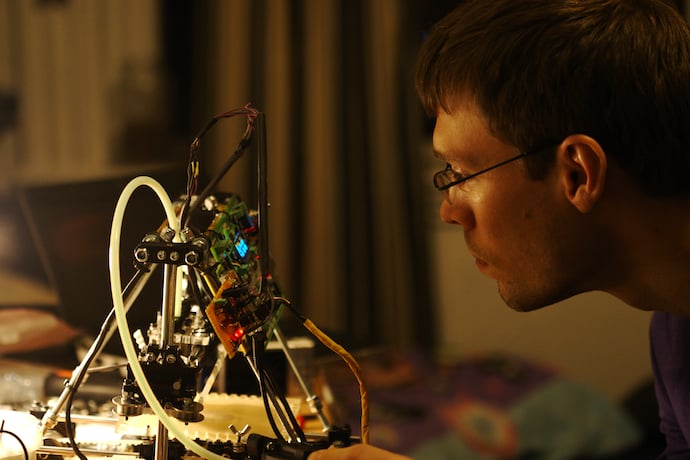If you have ever used or seen a 3D printer, there is a good chance that it was 3D printing PLA or ABS plastic. These common plastics make up most filaments, the long, colored tubes that feed into your 3D printer. They have been the go-to material for prints for a long time because plastic is relatively easy to use, melts and cools quickly, and is sturdy enough for your typical at-home prints.
But did you know there are a lot of other materials you can 3D print as well? Some might be a little more challenging or require a different type of machine than single-colored plastics but can open a whole new world of design possibilities and options. Test them out on your home printer, at your local library, or on your school printer and see what you can make.
Flexible Materials
Want to make a rubbery bracelet or even a bouncy ball with your 3D printer? Then TPE and TPU are the materials for you. They are the most common types of flexible filament. While they will not get as stretchy as a rubber band, they will be much softer than the typical plastics used to print.I was able to make some bouncy dice and stretchy Silly Bandz bracelets with these materials on my printer.
Ninjaflex is a great starter brand of flexible filament. Just be sure to pay close attention to the company’s recommended printing temperatures as stretchy filament can be a bit finicky and may create a spider-web-like pattern on your final prints.
Metal
Printing a fully metal part on a small home printer is still challenging, but you can make something close to it. Metal-infused filaments are a great starting point. A large percentage of these filaments are plastic, but they are also infused with metal powders like bronze, copper, and magnetic iron. They can give your prints a metallic appearance, make them magnetic, and even allow them to be polished.
Fully stainless-steel filament does also exist, but is expensive and more often used for engineering purposes. I would recommend trying out the infused parts first before looking into that option.
If you cannot resist going full metal though, check out some 3D print-on-demand services like Shapeways. While you will not get to see your part being printed, you will get back a cool metal version of your digital creation.
Wood
Like metal-infused filaments, wood filaments are also mixed with plastic. Although they are only about one-third wood fiber, the final prints feel surprisingly like wood. You can even pick the type of wood that you think best suits your project, from cedar to bamboo. This lets you bring some natural colors and textures into the heavily plastic and metal world of 3D printing.
Fun Plastics
As an honorable mention, I must give a shoutout to some unique plastic filaments. You can find some that glow in the dark or change from one color to another making a rainbow pattern on your 3D print. I even used glow-in-the-dark plastic filament to 3D print my wedding bouquets.
These are all great options to push your creativity and make something new on your 3D printer.
Learn more
3D Printing Materials
https://formlabs.com/blog/3d-printing-materials/
The 5 Filament Types You Need to Know
https://www.youtube.com/watch?v=dYPW5Rlwn8g
TPE vs. TPR in 3D Printing
https://www.xometry.com/resources/3d-printing/tpe-vs-tpu-3d-printing/
3D Printing from Flexible Materials
https://www.youtube.com/watch?v=5D3uc-nAe5c
3D Printing Metal
https://www.youtube.com/watch?v=4coIacNNl28
Metal 3D Printing Materials
https://markforged.com/resources/blog/metal-3d-printing-materials
3D Wood Printing
https://www.3dnatives.com/en/all-you-need-to-know-about-wood-3d-printing-060220234/
How Wood is Used in 3D Printing
https://www.azom.com/article.aspx?ArticleID=21703
How 3D Printed Wood is Made
https://www.youtube.com/watch?v=3QqqEXGAMmM
Quick Guide to Exotic FDM Printing Materials
https://www.treatstock.com/guide/article/123-a-quick-guide-to-exotic-fdm-printing-materials

